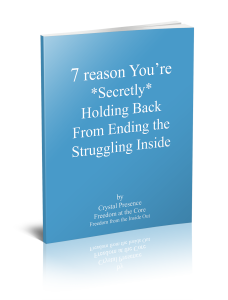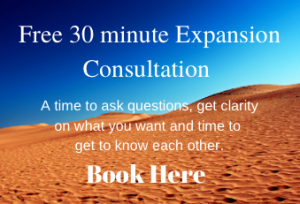 As we first came into the world, we came forth within the flow of a greater intelligence guiding us in the manifestation of our physical bodies. As we emerged from the womb and we were met with variety of conditions, some feeling good, some uncomfortable and frightening. We set out on the journey of discovering who we are and how to feel safe in our lives.
As we first came into the world, we came forth within the flow of a greater intelligence guiding us in the manifestation of our physical bodies. As we emerged from the womb and we were met with variety of conditions, some feeling good, some uncomfortable and frightening. We set out on the journey of discovering who we are and how to feel safe in our lives.
In times of not feeling safe, we conjured up ways to control ourselves to soften the truth of what was really happening. We assembled an illusion that our caretakers were keeping us safe and meeting our needs. We looked inward to fix what we thought must be wrong with us. We focused our anger (our strong desire for change) inward. Turning anger in on ourselves which soon turned into self rejection. To cover up the self rejection we also developed up a false sense of self importance.
A good example is Julie and John. Their parents had been too busy to adequately meet their needs. Nor did they give them the natural experience of safety called bonding. Julie and John were quick to assemble an illusion that they were safe, connected and bonded. They also assembled a false sense of independence, thinking they had to take care of themselves since no one else was. Now as adults when Julie and John feel threatened in their relationship, their illusion of safety gets triggered. The more they try to keep their illusion in place, the more they feel disconnected and separate from one another and their world. Julie cries and criticizes herself which is provoking to John and their relationship is deteriorating. John acts out by rising up to feel self important which is also provoking. They also try to control each other for fear their illusions are falling apart. They are so wrapped up in keeping their illusion in place, they fail recognize that the illusion is what keeps them feeling threatened and unsafe.
Robert Firestone, author of “The Fantasy Bond”, refers to this phenomena as “fantasy bonding”. A fantasy of safety that is held in place by attracting, distorting and provoking one’s reality. From his perspective all the labels we call mental illness such as neurosis, schizophrenia, etc. are different levels of the fantasy bond. The more deprivation and abuse we had, the more isolated and “crazy” we feel.
Resolving the fantasy bond is tricky. We set up our fantasy bond in such a way as to keep it hidden from ourselves and others. We mediate, do therapy, go to workshops and still do not feel that we get to the core of it. We bounce back to feeling uptight, controlling and disconnected. We see it reflected in our families, politics, corporations, institutions and other systems.
We know the resolution is within us, yet we still wonder how can we be sure we are really safe? Are we willing to uncover the truth of how we assemble our illusions of safety? Are we dis-appoint-ing ourselves by missing our appointments with power to co-create the safety available to us?
The following is a Gestalt exercise for creating safety inside…
•Gather four pillows.
•Sit on one and put the other three in front of you.
•You be the spirit that is guiding a conversation with your body, emotions, mind and heart.
•Let each part speak and express their feelings and concerns about being part of you. For example, your emotions may feel angry that you try to control and avoid them. Then you respond from your perspective as their spirit.
•Let all the aspects interact with each other in a similar way.
•Acknowledge that you are empowering yourself.
•Keep it going until you arrive at a sense of resolution, safety and alignment inside.
•Receive the joy of creating safety within yourself while being a catalyst for safety in your world.
More tips on creating our safety from the inside out…
•Move, express and circulate your energy.
•Embrace the truth that you are connected to a loving source who is always there to guide you in being safe.
Move, express and circulate your energy.
•Trust your internal guidance system.
•Change beliefs about safety and how to create it.
•Notice any need to have to control yourself or others to feel safe.
•Change the belief that someone needs to save you.
•Conjure up the bodily felt sense of safety and practice it.
•Avoid movies, media and stories that perpetuate fear.
•Read the book, “The Wisdom Of The Enneagram” by Riso and Hudson, a great source of revealing the strength of your essential self by recognizing the many different thoughts, feelings and behaviors used to keep the illusion of control and lack of safety in place.
•Ask the question, “What is the nature of experiencing safety from my inside out?”
Safely,













March 5, 2017
0 Comments